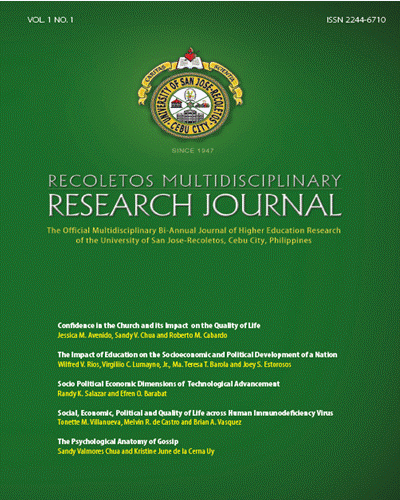Construction of a Simple Multifractal Spectrum as an Alternative to the Legendre Spectra in Multifractal Formalisms
DOI:
https://doi.org/10.32871/rmrj1301.01.10Keywords:
monofractal, multifractal statistical observations, power-lawAbstract
It is important to realize at the beginning of a statistical analysis whether the data are from a monofractal or multifractal distribution because the methods of analysis are different for each. In seismic sequence analysis, for instance, the monofractal method uses the R/S and DFA (range-scale and detrended fluctuation analysis, respectively) techniques while the multifractal formalism uses the partition function technique (PFT) and the Legendre spectra outputting three parameters: maximum 


References
Bittner HR, Tosi P. Braun C, Maeesman M, Kniffki KD. Counting statistics of fluctuations: a new method for analysis of earthquake data. Geol
Rundsch 1996;85:110-5.
Boschi E, Gasperini P, Mulargia F. Forecasting where larger crustal earthquakes are likely to occur in Italy in the near future. Bull Seism Soc Am 1995;85:1475-82.
Bruno R, BAvassano B, Pietropaolo E, Carbone V, Veltri P. Effects of intermittency on interplanetary velocity and magnetic field fluctuations anisptropy. Geophys Res Lett 1999;26:3185-8.
Carlson JM, Langer JS. Properties of earthquakes generated by fault dynamics. Phys Rev Lett 1989;62:2632-6.
Chen K, Bak P, Obukhov SP. Self – organized critically in a crack – propagation model of earthquakes. Phys Rev A 1991;43:625-30.
Corrieg AM, Urquizu M, Vila J, Manrubia S. Analysis of the temporal occurrence of seismicity at Deception Island (Antartica). A nonlinear approach. Pageoph 1997;149:553-74.
Cox DR. Isham V. Point Processes. London: Chapman and Hall; 1980.
Davis A, Marshak A, Wiscombe W. Wavelet – based Multifractal analysis of nonstationary and/or intermittent geophysical signals. In: Foufoula –
Geogiou E, Kumar P, editors. Wavelet in geophysics. New York: Academic Press; 1994. P. 249-98.
Davis A, Marshack A, Wiscombe W, Cahalan R. Multifractal characterization of nonstationary and intermittency in geophysical fields:
observed, retrieved or simulated. J Geophys Res 1994;99:8055-72.
Diego JM, Martinez –Gonazales E, Sanz JL, Mollerach S, Mart VJ. Partition function based analysis of cosmic microwave background maps. Mon Not R Astron Soc 1999;306:427-36.
Gutenberg B, Richter CF. Frequency of earthquakes in California. Bull Seism Soc Am 1944;34:185-8.
Hurst HE. Long – term capacity of reservoirs.Trans Am Soc Civ Eng 1951;116:770-808.
Ito K, Matsuzaki M. Earthquakes as a Self – organized critical phenomena. J Geophys Res 1990;95:6853-60.
Johnson, R. and W. Wichern (2000) Applied Multivariate Statistics (Wiley Series: New York)
Kagan YY. Observation evidence for earthquakes as a nonlinear dynamics process.Physica D 1994;77:160 – 92.
Kagan YY, Jackson DD. Long – term earthquake clustering. Geophys J Int 1991;104:117-33.
Kagan YY, Knopoff L. Statistical short – term earthquakes prediction. Science 1987;236:1563.
Kantelhardt JW, Koscienly – Bunde E, Rego HNA, Havlin S, Bunde A. Detecting long-range correlations with detrended fluactuation analysis. Physica A 2001;295:441-54.
Lapenna V, Macchiato M, Telesca L. 1/f^(-β) Fluctuations and self-similarity in earthquakes dynamics: observational evidences in southern Italy. Phys Earth Planet INt 1998;106:115-27.
Mandelbrot BB. Intermittent turbulence in self-similar cascades: divergence of high moments and dimension of the carrier. J Fluid Mech 1974;62:331-58.
Meneveau C, Screenivasan KR. The Multifractal nature of turbulent energy dissipation. J Fluid Mech 1991;224:429-84.
Padua, R., Adanza, Joel G., Mirasol, Joy M. (2013) “Fractal Statistical Inference†( The Threshold, CHED-JAS Category A Journal, pp. 36- 44).
Peng C-K, Halvin S, Stanley HE, Goldberger Al. Quantification of scaling exponents and crossover phenomena in nonstationary heartbeat time series CHAOS 1995;5:82-7.
Schertzer D, Lovejoy S, Schmitt F, Chigirinsya Y, Marsan D. Multifractal cascade dynamics and turbulent intermittency. Fractals 1998;5:427-71.
Downloads
Published
How to Cite
Issue
Section
License
Copyright of the Journal belongs to the University of San Jose-Recoletos


